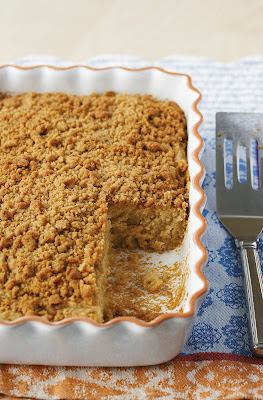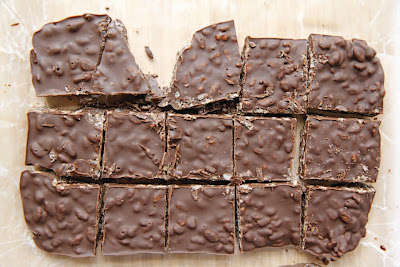Coffee Cake with Streusel Topping
Did you know that most coffee cakes don’t contain coffee? They get their name because they are intended to be served with coffee, which makes them the perfect treat for breakfast. My favorite part of a coffee cake is always the streusel topping—just enough sugar to wake you up.
The technique used here to create the streusel topping is one that will be used frequently when making cookie dough and pie crusts.
Makes 12 to 16 Servings
For the Cake:
2 cups (256 grams) of your favorite gluten-free flour blend
½ teaspoon xanthan gum (leave out if your flour blend contains xanthan gum)
3 teaspoons baking powder
½ teaspoon salt
4 tablespoons (½ stick) Earth Balance Natural Shortening, softened (see tip)
½ cup granulated sugar
3 teaspoons Ener-G Egg Replacer mixed with 4 tablespoons warm water (equal to 2 eggs)
½ cup unsweetened applesauce
1 cup coconut milk beverage (see tip)
1 teaspoon vanilla extract
For the Streusel Topping:
2/3 cup gluten-free oat flour
¾ cup light brown sugar
3 tablespoons Earth Balance Natural Shortening, cold
1. Preheat the oven to 350°F. Spray a 9-inch square baking dish with cooking oil.
Prepare the Cake Batter:
2. Mix together the flour, xanthan gum (if needed), baking powder, and salt in a medium bowl. Set it aside.
3. Cream together the shortening and granulated sugar in a large bowl, with a mixer on medium speed, for about 5 minutes, until a textured paste forms. Scrape down the sides of the mixing bowl as needed.
4. Add the egg replacer mixture, applesauce, coconut milk, and vanilla to the creamed sugar. Blend with a mixer on medium-low speed for 2 to 3 minutes.
5. Gradually add the flour mixture and blend on medium speed, about 2 minutes.
6. Pour the batter into the baking dish, spreading it to the sides of the pan.
Prepare the Streusel Topping:
7. In a large mixing bowl, combine the oat flour and brown sugar, using a pastry cutter or pastry fork.
8. Cut the shortening into tablespoon-sized pieces. Use the pastry cutter to work the shortening into the flour.
9. Crumble the streusel topping over the batter.
10. Bake at 350°F for 32 to 36 minutes.
Tips
• Note that the shortening for the cake is used at room temperature, whereas the shortening for the topping is used cold. Plan to let just the 4 tablespoons sit out to soften and leave the remainder in the fridge until you need it for the streusel.
• If you need to avoid coconut due to an allergy, substitute hemp milk or rice milk for the coconut milk.
Credit line: Recipe from Learning to Bake Allergen-Free: A Crash Course for Busy Parents on Baking without Wheat, Gluten, Dairy, Eggs, Soy or Nuts, copyright © Colette Martin, 2012. Reprinted by permission of the publisher, The Experiment. Available wherever books are sold.


